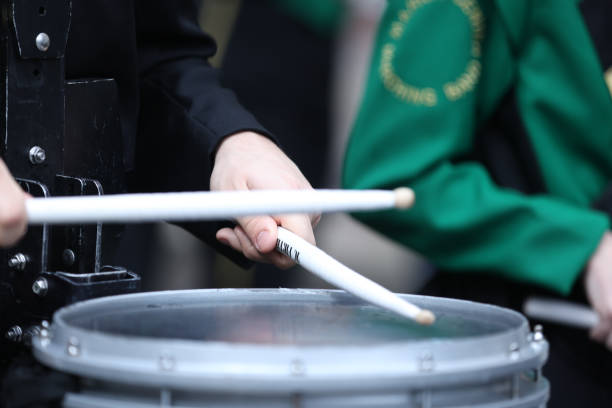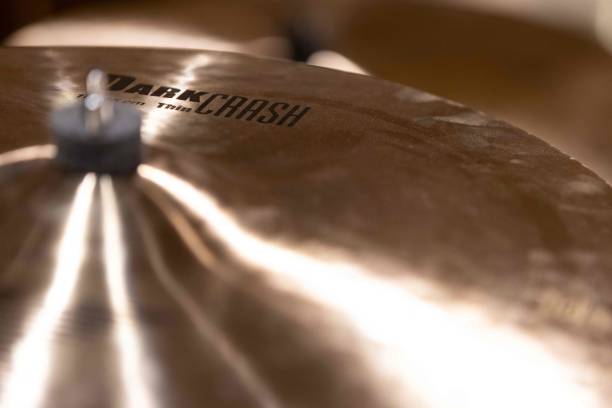There’s a hidden elegance in every stroke of a drumstick, every shimmering crash of a cymbal. What seems like instinct or raw energy on stage is, underneath, an intricate dance of motion, material, and vibration. The physics of drumming isn’t just science, it’s the quiet engine behind the groove. It tells us why sticks bounce, why cymbals resonate, and why every drumbeat has a heartbeat of its own.
But wait: why does a stick rebound even when it hits something as solid as a snare? And why does a metal disc produce such a warm, lingering tone? The answers are more fascinating than you might think. Let’s get into it.
The Dance of Motion: What Makes Drumsticks Bounce?
Close your eyes and picture a drummer in flow. Their sticks seem to bounce almost effortlessly, like they’ve got springs in their hands. But there’s no trick here. Just physics.
At its core, drumstick bounce is about energy transfer and elasticity. When a stick strikes a drumhead, it pushes down and then springs back. But not all that energy goes into sounds of it comes right back into the stick, helping it rebound.
So, what exactly causes the bounce?
It’s a blend of three things:
- Rebound force from the drumhead: Most modern drumheads are made of synthetic materials like Mylar, which stretch just enough to absorb impact and then spring back.
- Flexibility of the stick: Hickory, maple, oak: each wood type has different rebound characteristics. Hickory, for instance, absorbs shock well and springs back with energy, making it a favourite among many players.
- Angle and grip: Here’s where it gets personal. A tight grip can choke the stick’s motion, while a relaxed one lets it breathe and rebound freely.
If you’ve ever practised rudiments and felt like the stick was working with you, that’s the physics kicking in. And if it felt stiff or dead? You were probably fighting the rebound rather than flowing with it.
Why Does Stick Tension Matter So Much in Drumming?
You’ve probably heard a teacher say, “Loosen your grip!” But why is that so important?
The answer lies in the natural vibration of the stick. Gripping too hard dampens the vibrations, kills the rebound, and tires your hand. On the flip side, a looser grip lets the energy travel back through the stick. It’s like catching a tennis ball with a soft hand versus a stiff one: the former absorbs and redirects, the latter just hurts when it comes to drumming.

Drumheads and Energy Transfer: The Real MVPs
While sticks get most of the attention, the drumhead does a ton of the heavy lifting. When struck, it stretches downward and then snaps back up. This motion pushes air and creates the sound wave we hear as a drum tone.
But here’s where it gets nuanced: Tighter drumheads rebound faster and feel more “springy,” perfect for jazz or fast-paced rock. Looser ones feel deeper and warmer but don’t bounce as quickly. So your tuning choice doesn’t just affect tone, it changes how the sticks react under your hands in drumming.
The Cymbal’s Voice: Why Cymbals Resonate So Beautifully
Cymbals have a personality all their own. They shimmer, crash, swell, or whisper depending on how they’re struck. But what makes them sing instead of just clang?
It all comes down to vibrational resonance.
When you hit a cymbal, the energy travels outward in waves. Unlike a drumhead that’s stretched tight, a cymbal is a suspended, freely vibrating metal surface. That freedom allows it to sustain sound for seconds after the hit in drumming.
The key physical elements:
- Thickness: Thinner cymbals vibrate more easily and sound darker or washier.
- Diameter: Larger cymbals offer longer sustain and lower tones.
- Bell shape: A large bell gives you higher-pitched overtones and more attack.
The sound is all about waves: some crashing into each other, some ringing out in harmony. This is why no two cymbals sound exactly the same. Even two from the same line can surprise you.
Why Do Some Cymbals Sound “Cold” or “Warm”?
Ever hit a cymbal and felt like it was too harsh? Or one that made you feel like it was wrapping you in sound?
That’s not just taste, it’s physics again.
Warm-sounding cymbals typically have more complex overtones and a slower decay, often thanks to softer metals or hand-hammered surfaces. Brighter cymbals might be more uniform and cut through a mix with precision. And sometimes, it comes down to the alloy blend: B20 bronze has a different tonal character than B8, and your ears can tell.

The Magic of Frequency: What Makes a Good Drum Sound?
Let’s break something down.
- Low frequencies = Boom (kick drum, floor toms)
- Mid frequencies = Body (snares, rack toms)
- High frequencies = Snap and shimmer (cymbals, snares, stick attack)
Every drum hit is a mix of all these frequencies. Your brain interprets that mix and forms an opinion: tight, muddy, open, sharp, dull.
Tuning, room acoustics, and even the weather can subtly change this blend. That’s why a kit might sound amazing at soundcheck but feel different once the crowd rolls in. Air absorbs high frequencies differently when the room fills with people: yes, humans are part of the physics, too.
Can You Train Yourself to “Feel” Physics on the Kit?
Absolutely, and most drummers do, even without knowing it.
Every time you adjust your grip, angle a cymbal just so, or tune a drum to get the right bounce, you’re fine-tuning your interaction with physical laws. With enough time, it becomes second nature. But once you understand why things behave a certain way, you can adjust with more precision and confidence.
Drum Shells, Bearing Edges, and Resonance
Let’s not forget the shell itself. Wood type, thickness, bearing edge, and even the hoops affect how a drum vibrates.
- Maple shells are punchy and warm.
- Birch offers more attack and clarity.
- Mahogany feels old-school with deeper lows.
Bearing edges, where the drumhead meets the shell, play a massive role. Sharper edges give you more attack and less contact with the shell, while rounded ones allow more shell tone and warmth. It’s subtle, but it’s real.
Why Does the Same Drum Sound Different in Different Rooms?
If you’ve ever lugged your kit to a new venue and felt like it sounded totally different, you’re not imagining it.
Room acoustics dramatically affect how sound waves travel and reflect. Small rooms can create more reflections, making things feel “boomy” or messy. Larger rooms let sounds breathe but may swallow up the highs. Drummers quickly learn to tweak tuning and mic placement to help compensate, often with a little guesswork and some gaff tape.
The Rhythm of Physics: Why It All Feels So Human
Here’s where it all circles back: The physics of drumming isn’t cold or clinical. It’s the reason why drummers can move people to dance, cry, or scream with joy. When you understand what’s happening below the surface, it becomes a kind of language.
That bounce? That shimmer? They’re not just accidents, they’re voices. And once you hear them, really hear them, you’ll never un-hear them again.
It’s funny: physics is supposed to be all about precision. But in the hands of a drummer, it’s pure feel.
Key Takeaways
- Drumstick bounce relies on energy transfer, drumhead tension, stick material, and grip.
- Cymbal resonance is all about vibrational freedom, shape, and alloy properties.
- Room acoustics, shell construction, and tuning dramatically influence sound.
- Understanding the physics behind your playing doesn’t make you robotic; it makes you even more expressive in drumming.
